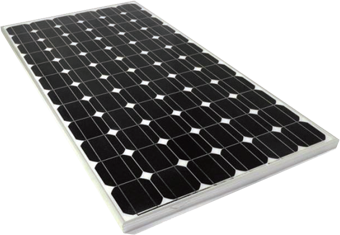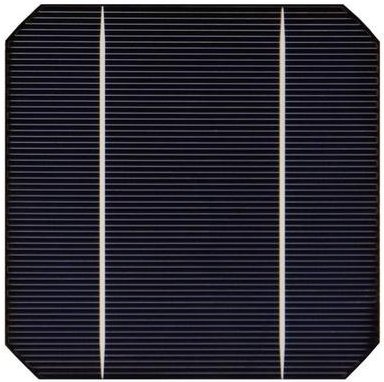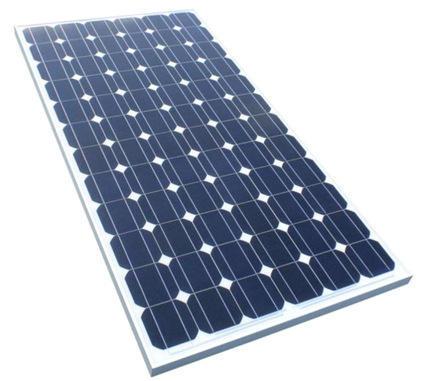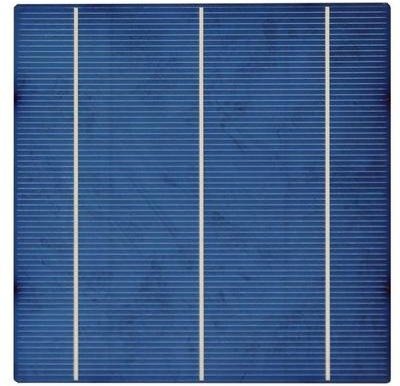Types of solar cells: monocrystalline, polycrystalline, thin film
In the sunny regions of the planet, where conventional power supply is impossible or impractical and the installation of a wind turbine for some reason is not suitable, solar panels (batteries) can be used. The sets of high power solar panels are installed on the roofs of private houses, in gardens, on ships, on lanterns. Portable solar batteries are used to charge gadgets and batteries while traveling, to power walkie-talkies.
Solar panels are reliable, have no moving parts, are not subject to mechanical wear like wind turbines, which is why they are very durable and can serve their owner reliably for decades. Let's look at what solar panels are, their main types.
Monocrystalline solar cells

Monocrystalline solar panels have a traditional black or dark blue hue. These panels are framed by an aluminum frame and covered with impact-resistant glass.
Monocrystalline solar cells are made from pure silicon only.A pure silicon melt slowly solidifies on contact with a seed, thus producing a cylindrical silicon single crystal casting about 20 cm in diameter and up to 2 meters long.
The resulting ingot of pure silicon is cut into plates about 300 μm thick each. The efficiency of such elements reaches 19%, because in this multistructure the atoms are arranged in such a way that they provide the electrons with a correspondingly higher mobility, and the batteries from them show a higher energy efficiency.

The plates are equipped with metal electrodes in the form of grids. Usually, the individual cells of monocrystalline batteries are in the form of squares with cut corners.
These elements are quite efficient, industrial designs show real efficiency in the region of 16%, therefore elements of this type are more expensive per 1 watt than polycrystalline ones. Their service life is very long, it can reach 50 years.
Polycrystalline solar cells

Bright blue polycrystalline solar cells are much cheaper than monocrystalline. The elements for them are not made from a single crystal of silicon, so the silicon atoms are arranged here in a random way.
Now the average efficiency of a polycrystalline panel is in the region of 13-15%. However, due to its wide availability, this type of cell is very common among consumers who want to access solar energy as cheaply as possible.

The great disadvantage of polycrystalline elements is that they exhibit extreme fragility during transport. Their maximum service life is 25 years.The process of industrial production of polycrystalline elements is improving over time, so there is hope that in the future they will catch up with monocrystalline in terms of efficiency.
Thin film solar cells
Thin film solar cells cheaper to manufacture than monocrystalline and polycrystalline silicon. They are based on polymer films, amorphous silicon, aluminum, cadmium telluride and other semiconductors, which are already used in the manufacture of chargers for gadgets, in the form of small foldable solar cells.
Batteries of this type occupy 2.5 times more area than crystalline ones at the same power, but they can work even in cloudy weather with scattered light during cloudy weather, and the batteries can be placed not only on the roof of the building, but even on its walls. Therefore, the use of thin-film batteries is justified in the construction of relatively large solar power plants, when there is the necessary area for their placement.
It is thin-film panels that are particularly popular today in systems operating on an industrial scale with grid-tied inverters that supply electricity to the public grid. These systems require a high voltage controller and a special inverter, which differs from the conventional domestic ones that are used with the usual monocrystalline and polycrystalline batteries.
Although thin-film solar cells made of amorphous silicon have an average efficiency of 7%, they are the cheapest in terms of production costs of all solar panels. Cadmium telluride has an average efficiency of 11% and is slightly more expensive than amorphous silicon batteries.Solar cells based on copper, indium, gallium and selenium are the most efficient thin film batteries, their efficiency reaches 15%.
See also:Efficiency of solar cells and modules

